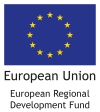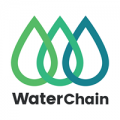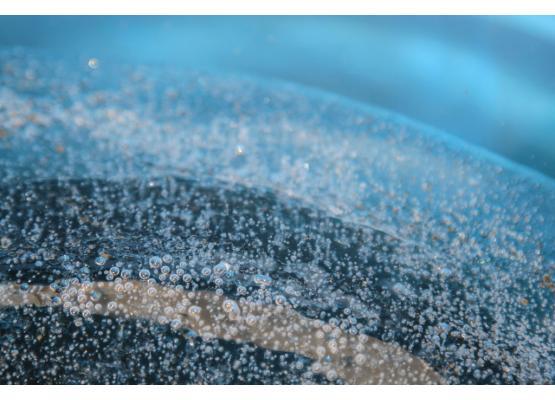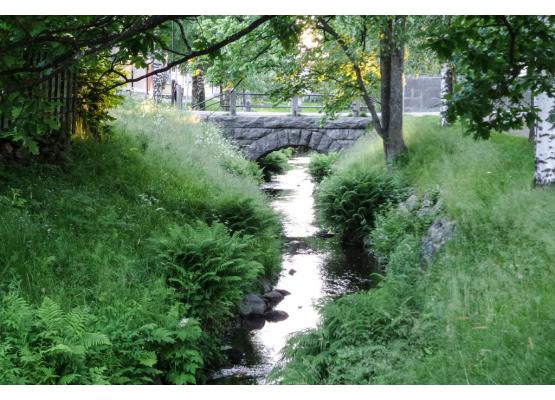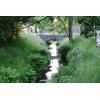P2 Sustainable use of common resources
2.4. Reduced nutrients, hazardous substances and toxins inflow into the Baltic Sea
Central Baltic
01.10.2015 - 30.09.2018
€2 574 250
€2 029 057
The project WATERCHAIN helps to reduce inflows of nutrients and hazardous substances to the Baltic Sea from all types of land-based sources by using pilot watersheds and environmental technology. The project tackles both highly developed intensely populated cities as well as less developed peripheral, sparsely populated rural and island regions in pilot watersheds.
The main actions are carried out in the pilot watersheds in each partner country with the practical actions targeted to sustainable impact. The sustainable use of common resources is based both on prevention of nutrients and hazardous substances inflow, as well as on water treatment of these harmful substances already entered the water bodies. During the project period, one to two sources of nutrients or hazardous substances recognized by river basin water management plans are identified and activities to reduce the substances in each pilot watershed are also initiated.
As a result of the project best practices with a common approach for sustainable development are launched in other geographical areas within the Central Baltic region and further all countries around the Baltic Sea. By year 2023, the pollution loads of nutrients and hazardous substances from targeted sources are reduced in pilot watersheds flowing into the Baltic Sea. Therefore, project results have a direct impact on the quality of living environment of local people and visitors to the area, especially on pilot watersheds.
Satakunnan ammattikorkeakoulu
Country: FI
Partner budget: 479.350 EUR
Amount of ERDF funding: 359.512 EUR ERDF
Pyhäjärvi-instituuttisäätiö
Country: FI
Partner budget: 288.900 EUR
Amount of ERDF funding: 216.675 EUR ERDF
Turun ammattikorkeakoulu
Country: FI
Partner budget: 289.800 EUR
Amount of ERDF funding: 217.350 EUR ERDF
Kungliga Tekniska Högskolan
Country: SE
Partner budget: 374.100 EUR
Amount of ERDF funding: 280.575 EUR ERDF
Tallinna Tehnikaulikool
Country: EE
Partner budget: 262.375 EUR
Amount of ERDF funding: 223.019 EUR ERDF
Eesti Keskkonnauuringute Keskus
Country: EE
Partner budget: 238.625 EUR
Amount of ERDF funding: 202.831 EUR ERDF
Rīgas Tehniskā universitāte
Country: LV
Partner budget: 207.300 EUR
Amount of ERDF funding: 176.205 EUR ERDF
Vides Risinäjumu Instituts
Country: LV
Partner budget: 275.400 EUR
Amount of ERDF funding: 234.090 EUR ERDF
Ålands Vatten
Country: FI
Partner budget: 158.400 EUR
Amount of ERDF funding: 118.800 EUR ERDF
Achieved results
Waterchain - prevention of nutrients inflows in the Baltic Sea
Project Waterchain tackled the prevention of water pollution by using spatial planning and source-specific cost-effective technological solutions for water treatment including both science-based ones as well as practical knowledge. The cross-border co-operation partnership set up in the framework of Waterchain project, enabled by the wide complementary expertise of Finnish (incl. Åland), Estonian, Latvian and Swedish partners within the fields of water treatment led to the successful development and implementation of several practical innovative actions to prevent and reduce nutrients and hazardous substances inflows into the Baltic Sea. The project, focused on the main local problems and considered the feedbacks of the local target groups.
The technological methods used to reduce the inflow of nutrients and hazardous substances from inland waters were implemented during the project in participating countries as pilot investments. Crucial hotspot areas for nutrient loading were identified in pilot watersheds. Reduction activities were carried out in hotspot areas by installing and implementing a small scale innovative nutrient reduction systems on the nutrients sources as pilot measures: 4 pilots in Finland and 2 in Latvia. The seventh pilot was carried out in a laboratory.
In addition, the project identified three groups of hazardous substances based on Environmental Quality Standards (EQS) Directive 39/2013/EU and Baltic Sea Action Plan: pharmaceutical residues, pesticides and perfluorinated compounds. Activities to reduce the inflows into the watershed were initiated with a pilot in Swedish and Estonian pilot watersheds.
- 3 groups of hazardous substances identified
- 7 pilots watersheds
Internet presence
Other media visibility
A Cleaner Baltic Sea with Everyday Choices – Take WaterChain Toolbox in Use (2018)
Lokala satsningar i vattenprojekt (2018)
Ålands vatten märkt med Kranen (2017)
Kampanj ska lära musiker om Östersjön (2017) Rock the Baltic Sea!
Ungas idéer belönades på Östersjöns dag (2017)
https://ls24.fi/uutiset/huhtikuussa-katsotaan-pintaa-syvemmalle (2017)
Asukkaat mukaan Itämeren ravinteiden vähentämiseen (2016)
Eteläisen Satakunnan vesistöjä ja rantoja siivotaan roskatalkoilla (2017)
Source apportionment of nitrogen in Estonian rivers (2017) Research Article


